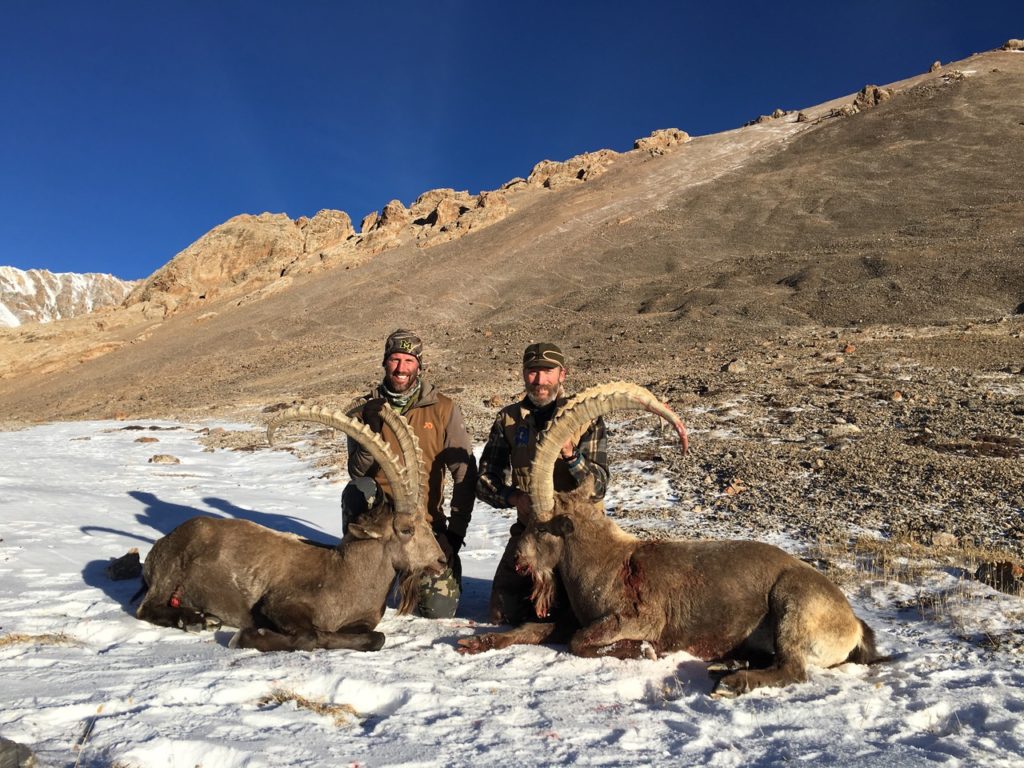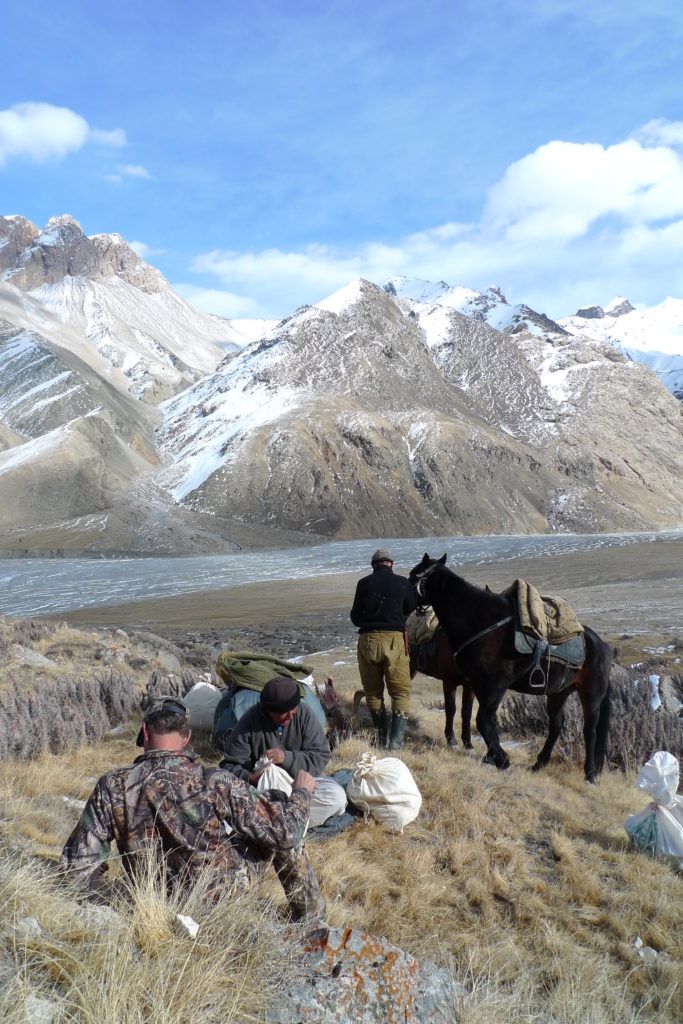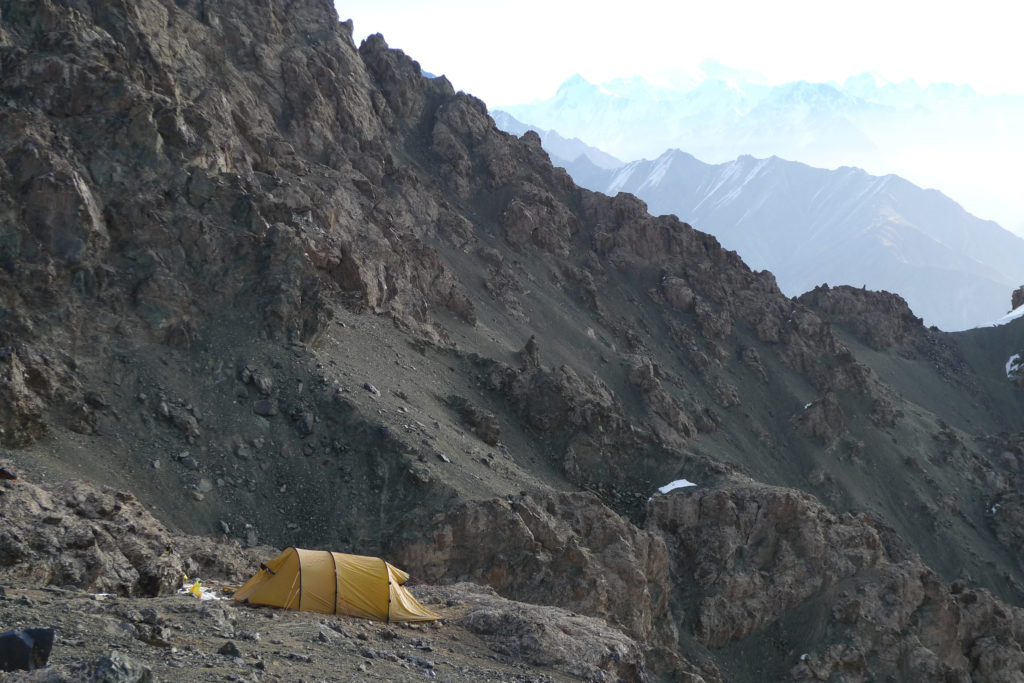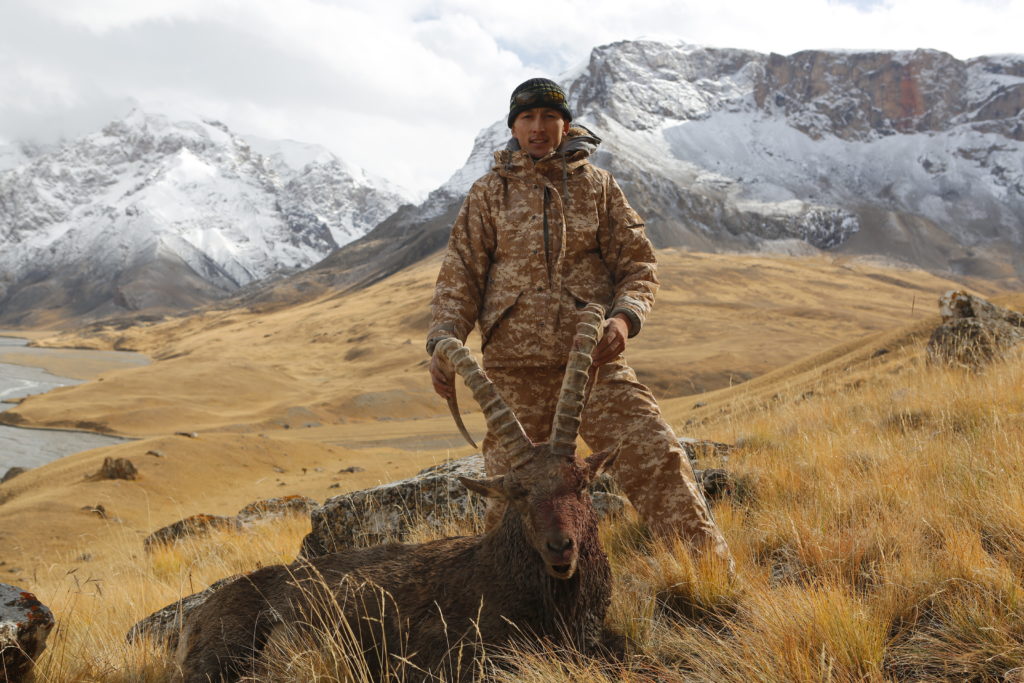Kyrgyzstan Overview
Located at the heart of Central Asia, Kyrgyzstan’s total area of 76,640 sq. miles is about the size of Nebraska, and borders with Kazakhstan, Uzbekistan, Tajikistan and China. The country is almost completely mountainous, being found at the juncture of two great Central Asian mountain systems – the historic Tian Shan and the Pamirs. More than half of Kyrgyzstan lies at an elevation higher than 8,200 ft. Only about one-eighth of the country’s territory lies lower than 4,900 ft, while glaciers and permanent snowfields cover more than three percent of the total land area. Snow-capped mountain peaks, crystal clear lakes, rushing streams, highland pastures and meadows, unique flora and fauna are what make up the land of this small country.
The local currency is a Kyrgyz som, however, US dollars are widely accepted in many restaurants and stores and the people are friendly and hospitable. The local population generally speaks Russian and Kyrgyz, although you will have no trouble finding an English-speaking person in the capital city of Bishkek. You will find a variety of foods and cuisines offered at local restaurants and cafes. The average daily expenditure for travelers including hotel, meals and some sightseeing will vary between $150-300 a day. Islam is the most common religion here and most of the people look Russian or Asian depending on the location. This is not a true “Arabic” country however as there exists a strong Asian influence in the culture and people of this excellent hunting destination.
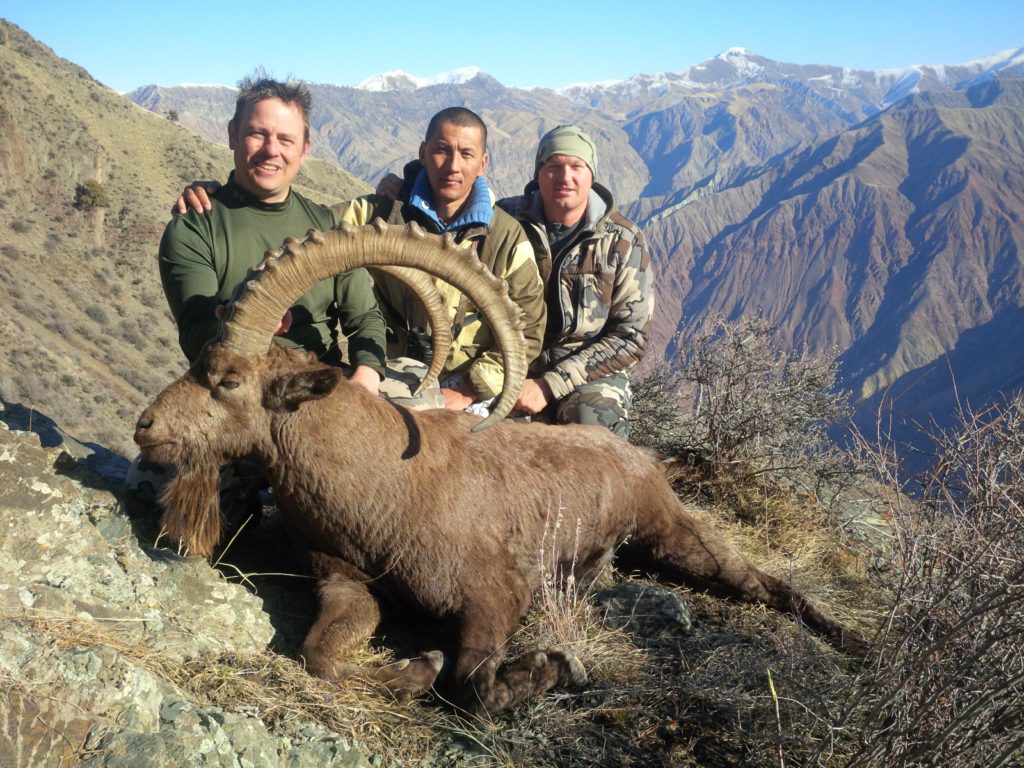
Getting There
Most commercial flights from North America will arrive in Bishkek, typically through Istanbul via one of the major US hubs like JFK, O’Hare (Chicago), Atlanta or LAX. Some flights will route through Frankfurt, Germany as well. Total flight time is over 20 hours. Upon arrival, you will normally be met by an interpreter and camp management (arranged by your booking agent or local outfitter) and assisted in clearing customs. A VIP Transfer is usually money well-spent as this expedites getting your weapons and gear into the country. Your entry visa will be issued at the airport.
Travel In-Country
To get to most hunting areas, you’ll travel several hundred miles using Russian 4×4 Jeeps. Depending on the camp location, most drives to base camps take 8-20 hours, depending on the camp. If hunting late in the year (Dec-Feb), there is always a chance that a big snow can close roads for several days. Depending on when you arrive in Kyrgyzstan and how you feel, you’ll leave for camp mid-morning the day you arrive or early the next morning. It is not uncommon to experience 1-2 day delays in town, waiting for permits or weather breaks to allow passage over the less than perfect road system. During the trip to base camp, there are several military/government and/or border checkpoints you should expect to travel through. Bribery money is generally not required, but there is no guarantee it will not be necessary. Helicopters are generally not available, but it could be an option if you were travelling in a large enough group and were interested and willing to pay for this additional cost.
Hunting Accommodations
The hunting areas and facilities vary depending on your outfitter. Some will have well-equipped base camp(s), complete with permanent buildings, yurts, outhouses, a generator, furniture, stock corrals and trophy care facilities. Other camps are more of a spike camp set-up, and will consist of yurts, portable trailers and/or lightweight Hilleberg tents and portable gas stoves.
Heat is by coal or dung burning stoves. Spike camps may have no stove. The food is basic: meats, rice, pasta, salami, bread, nuts, vegetables, fruit, and soups, but is usually quite good and filling. If you like special snack foods like candy bars, juice/energy drink mix and jerky, I’d recommend that you bring some with you and if you plan on spiking out (also recommended), you’ll also need to bring some freeze-dried meals and energy bars, as they are typically not available in this part of the world.
Bottled water is generally available when staying in base camp, but if you are worried about drinking water when spiking out, bring a water filter, Steri-Pen or purification tablets, especially for the spike out camps. Tea is served with every meal, so if you prefer coffee, you’ll need to bring instant coffee. Sodas, fruit juice, beer & vodka are also typically provided by your hosts.
The Hunt
Most hunts run between August 15th and November 30th for fall hunts or January 10th through February 28th for winter hunts. I’d recommend planning for 6-8 days of hunting and 4 days (total) of travel to and from the hunting area. Hunts are usually offered on 11-13 day rotations. Most hunters (and outfitters) book two hunters per hunt date for maximum efficiency and a personalized hunting experience.
Sample Itinerary 11-Day Kyrgyzstan Ibex Hunt:
Day 1: Arrive early am and travel half the distance to hunting area (about 4-6 hrs)
Day 2: Drive the rest of way to hunting area (5-10 hrs, depending on camp and weather)
Day 3-9: Hunt or leave early if finished
Day 10: Drive to Bishkek
Day 11: Fly Home
Ibex hunting is very physically demanding and prospective hunters need to be experienced mountain hunters. The trophy area hunts are more remote and will be very physical, but the average Ibex taken in these areas is 45” with a high chance of even larger trophies. Drive time to most trophy areas from Bishkek will be 12+ hours. The less remote areas still offer excellent hunting opportunities on average trophies, and fewer hours spent in a vehicle travelling to/from the hunting area and Bishkek.
I recommend that all hunters bring an Iridium Satellite phone or inReach and hunting gear and equipment that would be appropriate for hunts in places like BC, Alberta, the Territories, Alaska or the Rocky Mountain states. Most booking agents work with Kyrgyz resident outfitters who provide local guides, assistants, cooks, vehicles, horses, camps, food, lodging and interpreters (one per camp). The resident outfitters acquire the local licenses, tags, and permits for the hunters, and they are politically well connected. There will generally be an English speaking, Kyrgyz manager in the hunting camp to make sure your needs and questions are being met; they can help guide if needed.
If desired, hunters can also arrange to have an American or Canadian guide accompany them in addition to the local staff. This is always an additional cost. This optional service is not available with all agents/outfitters so research your options carefully before booking if this is something that appeals to you. Many consultants/agents just arrange the hunt with the local outfitters, and may not have an English-speaking person available to accompany you during the hunt. This option is quite helpful if you wish to harvest a very large animal, need help with trophy judging or the shooting process or if it is your first time in Asia, as most of the local guides do not speak English.
Elevations vary, depending on location. Hunting is typically between 9,000‐ 14,000 ft. Most people don’t get altitude sickness, but a medication called Diamox can be taken to alleviate most symptoms. Arriving in good physical condition will also help immensely.
On the first day or two of your hunt, most guides try to take it easy so that you can rest up and adapt to sleeping and hiking at these higher elevations and conditions. Common side-effects of high altitude hunts include: shortness of breath, elevated pulse and blood pressure, headaches and an incessant tired feeling. After a few days, most people adjust to the altitude and see noticeable performance improvements. If hunting with horses, you’ll find the Kyrgyz people to be remarkable horsemen, and in some cases, they can use the horses to get the hunter right to the animal. Vehicles are used on many of the hunts, but because of the terrain, horses and walking will get hunters to the larger animals. Generally, on the cold, late season hunts, hunters travel back to base camp each night. Spiking-out is an option for the more fit, prepared, adventurous, and ambitious.
For hunters wanting a true trophy Ibex (over 45”), spiking-out in backpack style tents will be necessary. Spot and stalk hunting is the preferred method of hunting as it allows you and your guides to judge the animals with spotting scopes before making the final stalk, no different than western or mountain hunting in North America. Hunters are advised to be comfortable shooting at distances between 300‐550 yards as this is often necessary. Game densities are generally quite high but will vary from area to area.
Kyrgyzstan is one of the most exciting, physically challenging and culturally interesting countries to hunt if you’re an experienced mountain hunter seeking an Ibex. With the appropriate planning and preparation, you can have a safe, adventurous, and successful hunt for one of the most iconic mountain game species available today.
For more information, do not hesitate to contact me directly at bryankmartin@gmail.com or my office manager Lynzy at 250-870-3021.
www.asianmountainoutfitters.com


